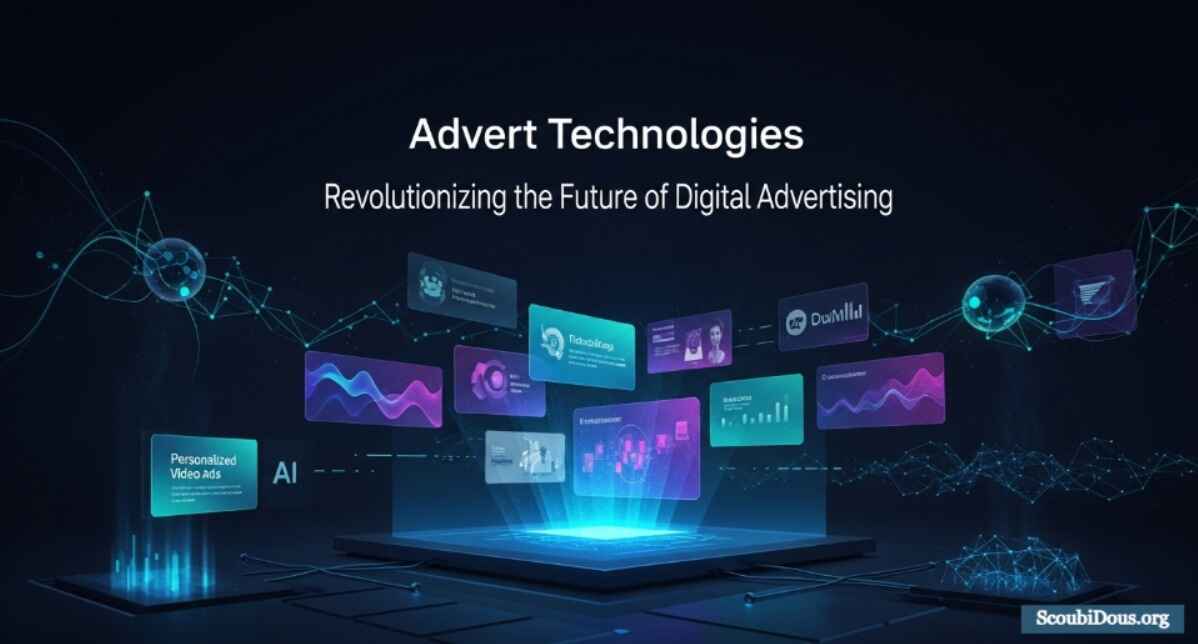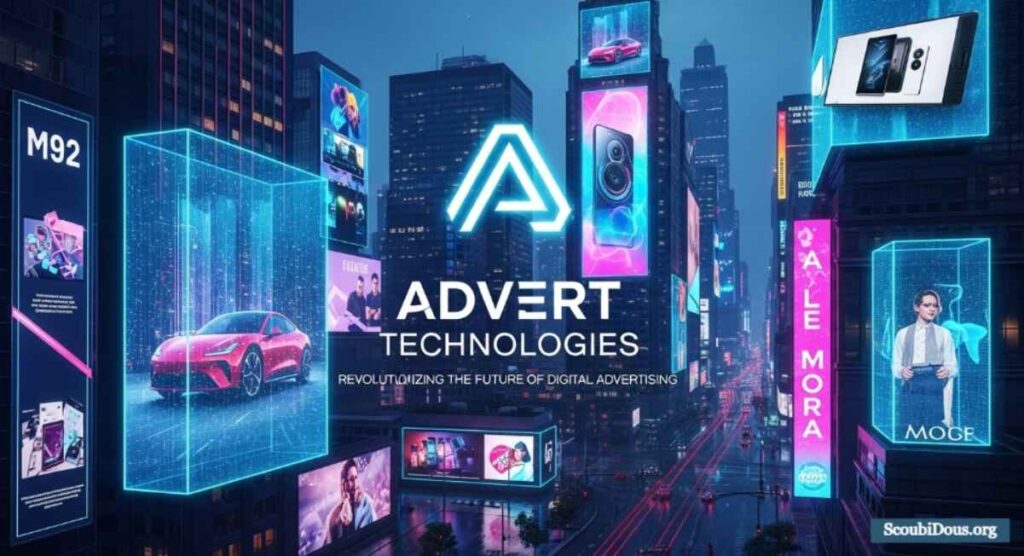Introduction
Advertising has undergone a profound transformation over the last few decades. Once limited to print, radio, and television, today’s marketing landscape thrives in the digital realm—powered by innovation, data, and automation. At the heart of this revolution lies advert technologies, often referred to as ad tech.
Advert technologies encompass the tools, software, and platforms that help companies plan, execute, and measure advertising campaigns across digital channels.
These systems combine creativity with science, using algorithms, analytics, and artificial intelligence (AI) to reach the right audience, at the right time, with the right message.
In this comprehensive guide, we’ll explore what advert technologies are, how they work, why they matter, and how they’re shaping the future of marketing worldwide.
What Are Advert Technologies?

Advert technologies refer to the collection of systems and tools used by advertisers, agencies, and publishers to manage, deliver, and analyze digital advertising campaigns.
They form the technological backbone of online marketing, supporting everything from audience targeting and ad placement to performance tracking and real-time bidding.
Key Components of Advert Technologies
- Ad Servers – Platforms that store, deliver, and track advertisements across multiple websites and devices.
- Demand-Side Platforms (DSPs) – Allow advertisers to buy digital ad inventory programmatically in real-time.
- Supply-Side Platforms (SSPs) – Enable publishers to manage and sell their available ad space efficiently.
- Data Management Platforms (DMPs) – Collect and analyze large amounts of user data for targeted advertising.
- Customer Data Platforms (CDPs) – Centralize customer information from multiple sources to improve personalization.
- Ad Exchanges – Digital marketplaces where advertisers and publishers trade ad inventory automatically.
- Analytics & Attribution Tools – Measure campaign performance and attribute conversions to specific ad interactions.
The Evolution of Advert Technologies
Advertising has evolved alongside technology. The journey from static banner ads to AI-driven, hyper-personalized campaigns is a story of innovation and adaptation.
1. The Early Days: Display Ads and Networks
In the late 1990s, online advertising began with simple display banners. Ad networks emerged to connect advertisers with multiple websites, simplifying ad buying but offering limited targeting.
2. The Programmatic Revolution
By the 2010s, programmatic advertising introduced automation and data-driven decision-making. Algorithms started bidding for ad space in real time, optimizing campaigns dynamically.
3. The Age of Data and AI
Today, advert technologies leverage machine learning, predictive analytics, and AI to deliver personalized ads. Modern platforms not only serve ads but also anticipate user intent, improving efficiency and return on investment (ROI).
How Advert Technologies Work
Advert technologies function through a complex ecosystem of platforms working together to automate the ad buying and delivery process.
Here’s a simplified breakdown:
| Stage | Process | Technology Involved |
| 1. Audience Data Collection | Gathering data on user behavior, demographics, and interests | DMPs, CDPs |
| 2. Campaign Planning | Setting campaign objectives, budgets, and targeting criteria | Ad Management Tools |
| 3. Real-Time Bidding | Automated auction where ad impressions are bought/sold in milliseconds | DSPs, SSPs, Ad Exchanges |
| 4. Ad Delivery | Displaying ads to users on websites, apps, or social platforms | Ad Servers |
| 5. Tracking & Optimization | Measuring performance and refining targeting | Analytics Platforms |
This integration of systems ensures precision, speed, and scalability in modern advertising.
Types of Advert Technologies
To understand their diversity, let’s look at the main categories of advert technologies shaping today’s marketing environment.
1. Programmatic Advertising Tools
Programmatic platforms use algorithms to automate media buying. Advertisers can target audiences based on data signals such as behavior, interests, and demographics.
Examples: DSPs, SSPs, and Ad Exchanges.
2. Search Advertising Technologies
These tools optimize ads on search engines. They determine ad placement based on user queries, keywords, and bidding strategies.
Example: Google Ads, Microsoft Advertising.
3. Social Media Advertising Platforms
Social media advert technologies enable precise targeting based on interests, location, and activity.
Example: Meta Ads Manager, LinkedIn Campaign Manager, TikTok Ads.
4. Mobile & In-App Advertising
With mobile usage dominating, technologies now deliver ads within apps using SDKs (Software Development Kits).
Example: AdMob, Unity Ads, AppLovin.
5. Video & Connected TV (CTV) Advertising
Video ad tech supports streaming services and video platforms, providing interactive, measurable ad experiences.
Example: The Trade Desk, Innovid.
Benefits of Advert Technologies
Advert technologies deliver measurable, scalable advantages for both advertisers and publishers.
1. Precision Targeting
Advertisers can define exact audiences using demographic, behavioral, and contextual data.
2. Automation and Efficiency
Programmatic systems eliminate manual processes, saving time and improving campaign efficiency.
3. Real-Time Insights
Instant data allows marketers to adjust campaigns on the go for better performance.
4. Cost Optimization
AI-based bidding ensures that advertisers pay only for valuable impressions or clicks.
5. Enhanced User Experience
Personalized ads reduce irrelevant content and improve engagement rates.
Challenges Facing Advert Technologies
Despite their benefits, advert technologies face several modern challenges.
1. Data Privacy Regulations
Global frameworks like GDPR and CCPA limit data collection, pushing companies toward privacy-compliant advertising solutions.
2. Ad Fraud
Automated systems can be exploited by bots, leading to wasted ad spend.
3. Ad Fatigue
Overexposure to repetitive ads can decrease user engagement.
4. Complexity
The ad tech ecosystem involves numerous intermediaries, making transparency difficult.
5. Measurement Inconsistencies
Tracking conversions across devices and channels remains challenging due to fragmented user data.
Emerging Trends in Advert Technologies

The advert tech landscape is rapidly evolving. The following trends are shaping its future:
1. Artificial Intelligence and Machine Learning
AI powers predictive targeting, content personalization, and automated optimization.
2. Contextual Advertising
With privacy concerns rising, contextual targeting—serving ads based on page content—is regaining importance.
3. Blockchain in Advertising
Blockchain can enhance transparency, prevent ad fraud, and streamline payments.
4. Augmented Reality (AR) and Virtual Reality (VR) Ads
Immersive experiences like AR filters and VR ads increase engagement and brand recall.
5. Voice Search and Smart Devices
Voice-activated advertising through smart speakers is an emerging frontier in advert technologies.
Real-World Examples of Advert Technologies
- Google Ads & Display Network: Dominates global ad tech with its massive data-driven ecosystem.
- The Trade Desk: A leading DSP enabling precise programmatic buying across channels.
- Amazon Advertising: Uses purchase and browsing data to serve relevant product ads.
- Meta (Facebook) Ads: Leverages social graphs and user engagement for targeted delivery.
Impact of Advert Technologies on Businesses
Advert technologies empower businesses of all sizes to compete globally by leveling the marketing playing field.
- Small Businesses: Access to self-serve ad platforms allows affordable audience reach.
- Enterprises: Use advanced AI tools for large-scale data analysis and campaign automation.
- Publishers: Monetize digital content effectively with programmatic advertising.
By integrating advert technologies, companies gain data-driven insights, improve return on ad spend (ROAS), and enhance brand visibility.
Best Practices for Implementing Advert Technologies
To maximize benefits, businesses should adopt strategic and ethical approaches:
- Prioritize Data Privacy Compliance
Always follow GDPR, CCPA, and other privacy laws.
- Adopt AI and Automation
Use smart algorithms for bidding, targeting, and reporting.
- Ensure Transparency
Choose partners with clear data usage policies.
- Use Multi-Channel Campaigns
Combine display, search, social, and video ads for holistic reach.
- Leverage Analytics Tools
Continuously measure and optimize based on real-time insights.
The Future of Advert Technologies

The future points toward hyper-personalization, automation, and ethical advertising. With AI advancing and privacy laws tightening, the next generation of advert technologies will focus on consent-based data, first-party analytics, and immersive ad formats.
Innovations like 5G, Web3, and generative AI will reshape how brands interact with audiences—transforming ads from interruptions into meaningful experiences.
Conclusion
Advert technologies have transformed the advertising ecosystem—making it more intelligent, data-driven, and measurable. As businesses embrace automation and analytics, they gain not only better ROI but also the ability to connect with customers authentically.
However, success depends on using these technologies responsibly—balancing personalization with privacy and innovation with integrity. In the evolving world of marketing, advert technologies will continue to define the next era of digital communication.


